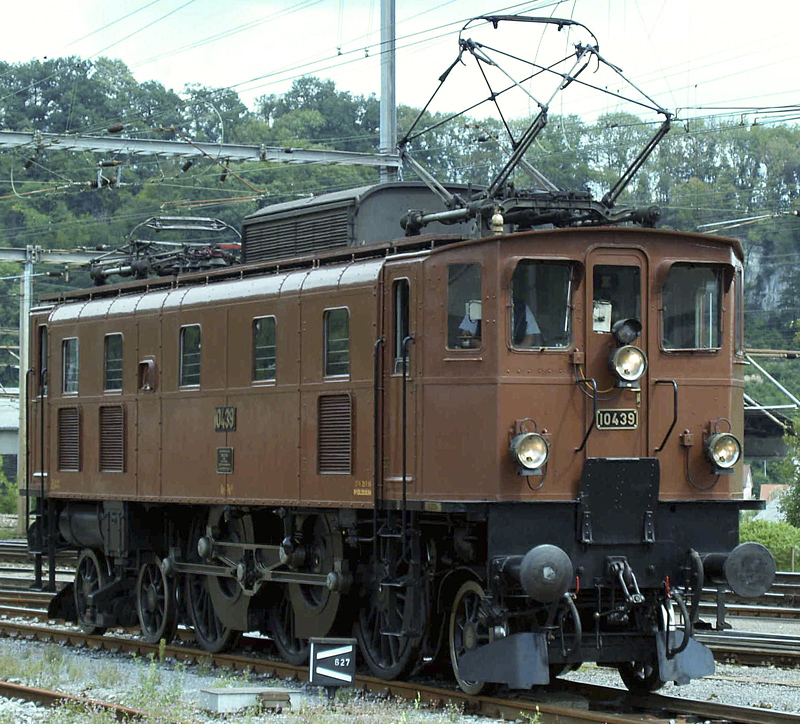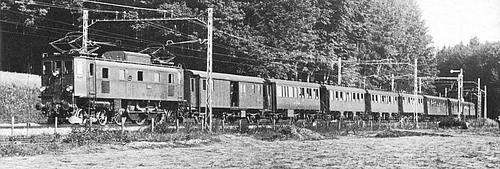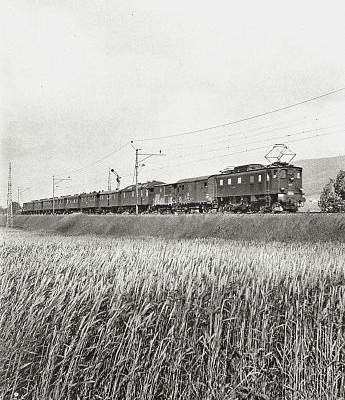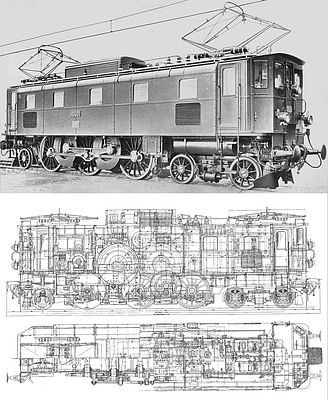Garrattfan's Modelrailroading Pages

SBB Ae 3/6
The Ae 3/6 II
General
The First World War had given rise to much concern over the vulnerable fuel position of Switzerland's railways and pushed the country into a rapid electrification programme. The Swiss railways were generally quick to adopt the novelty of electric traction, many of their developments among the pioneering work and they took the brunt of the teething problems inevitably accompanying this new technology. In the early days the electric motors were still so large that it was difficult to house them in the limited space of a locomotive. Also, gears were still hard to make reliably. Those two issues got an easy way out in the usage of an already familiar technology: rod drive. Until de engines became smaller and gears could be made with sufficient accuracy rods were the preferred way of powering electric locomotives, pretty much until 1925.

The sole remaining Ae3/6II in Olten. Photo published under GNU Free Documentation License
See it run on YouTube
The Ae3/6 II
| Main characteristics | |
|---|---|
| Road numbers | 10401-10460 |
| Length | 14,090 mm |
| Wheel diameter | 1610 mm |
| Carrying wheel diam. | 950 mm |
| Total operative weight | 98.5 ton |
| Adhesive weight | 55.3 ton |
| Total length | 9,294 m |
| Top speed | 100 km/h |
| Power | 2 x 775 kW |
| Tractive force | 15,000 kg |
| Power | 15,000 V |
| Built | 1924-1926 |
| Builder | SLM and MFO |
| Last service | 1976 |
| Survivors | No 10439 (operational) |
The Ae3/6 II is a link in the continuous development of the electric locomotives in Switzerland which was boosted by the intense cooperation between SLM (Swiss Locomotive and Machine factory) and SBB (Swiss State Railways)
The Ae3/6 II is essentially a further development of the 1919 built trial locomotive Be3/5 no 12201. Though this engine proved too weak for mountain service and too slow for lowland service it nevertheless had many good points and provided much insight of the way to go for further developments. The Ae3/6 II was mainly intended for lowland express train service. Designed for 90 km/h its top speed was soon raised to 100 km/h. With the advantage of

hindsight the rod drive was outdated by the time the whole delivery had been completed and frankly I think the series production of the Ae3/6 II should have been cut short in favour of the Buchli driven Ae3/6 I. Yet, the engine proved to be very robust and reliable. From 1930 on they even provided assist services on the Gotthard line. With the delivery of the stronger Ae4/7 starting in 1927 the Ae3/6 star soon sank to the less conspicuous services. The Ae3/6 was nevertheless invaluable and undemanding. Daily performances reached 450 and more km. No major incidents took place in the entire lifetime of the class so the fleet Ae3/6 II was still complete in 1964. From 1965 the gradual scrapping started but it wasn't until 1976 when the last run in revenue earning service took place. Over the 50 year life span of the locomotive its visual appearance remained largely unaltered. One engine has been retained as a historical locomotive. It is currently housed in Olten
See it run on Youtube


B&W photos all: Digitalen Eisenbahn Fotoarchiv

Sign my
GuestBook